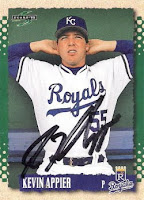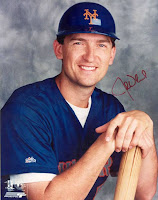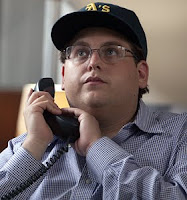 Kevin Appier had a long DMBL career... but was it worthy of the Diamond Mind Baseball League Hall of Fame?
Kevin Appier had a long DMBL career... but was it worthy of the Diamond Mind Baseball League Hall of Fame?Looking at the 16 starting pitchers who are or were eligible for the DMBL Hall of Fame -- that is, leaving out the guys who haven't been retired long enough (Greg Maddux, Randy Johnson, Pedro Martinez) and the two guys who are already in the Hall (David Cone and Dennis Martinez), but including pitchers who were eligible but are no longer on the ballot (Shane Reynolds, Pete Harnisch, Denny Neagle) -- Appier ranks first in several key categories.
Most wins (107) -- Appier, followed by Hideo Nomo (87)
Most strikeouts (1,470) -- Appier, followed by Nomo (1,370)
Most innings (1,810.0) -- Appier, followed by Andy Benes (1589.1)
Most starts (300) -- Appier, followed by Benes (274)
Most complete games (35) -- Appier, followed by Harnisch (29)
Most years played (11) -- Appier, tied with Benes (11)
On the other hand, he also ranks first in most hits allowed, most earned runs allowed, most walks allowed, and most losses.
But all this proves is that Appier had a long career. The question is, did he have a good one?
Appier's career ERA of 4.90 ranks puts him 6th out of the 16, between mediocrities Scott Erickson (4.86) and Kirk Rueter (4.96). (Bret Saberhagen leads at 4.35.) He's even lower in WHIP, ranking 10th. (Rick Reed leads with a 1.35; Appier's 1.55 puts him between Nomo at 1.52 and Pedro Astacio at 1.57.) He's just 8th in winning percentage (.471), between Juan Guzman and Reed. (Neagle leads at .565.) And despite having a huge lead in career starts and complete games, his 5 career shutouts leave him tied for 3rd with Reynolds. (Ismael Valdes leads with 8, followed by Nomo at 6.)
Appier is 6th in H/9 (10.2), 11th in BB/9 (3.8), 4th in K/9 (7.3) and 7th in K:BB (1.9). And remember, this isn't all-time... this is just out of the 16 starting pitchers who are or were eligible for the Hall of Fame.
Looking at his career season-by-season, you see Appier got off to a really bad start -- he was 6-28 with a 5.82 ERA and 1.87 WHIP in his first two seasons! If you throw out those two years, his career W% climbs to .523 (101-92) and his ERA drops to 4.78.
But can you ignore six bad years and focus only on five good years? Does a pretty good (but not great) peak warrant the Hall of Fame? Decide for yourself! Fill out your ballot today!



